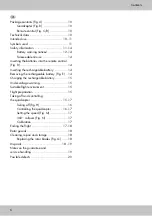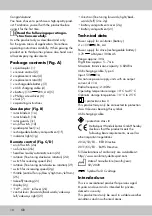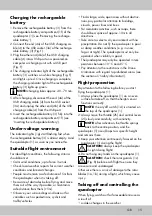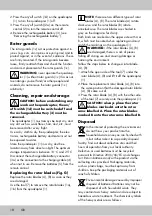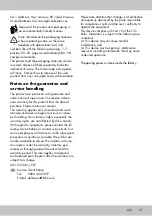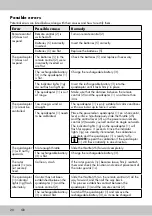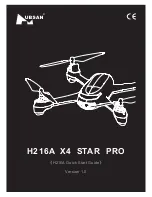
15
Charging the rechargeable
battery
1. Remove the rechargeable battery (3) from the
rechargeable battery compartment (1f) of the
quadcopter (1) (see ‘Removing the recharge-
able battery’).
2. Connect the end (4a) of the USB charging ca-
ble (4) to the USB socket (3a) of the recharge-
able battery (3) (Fig. F).
3. Plug the other end (4b) of the USB charging
cable (4) into a USB port on a powered-on
computer or charging unit with a USB port
(Fig. F).
4. The charging indicator light of the rechargeable
battery (3) switches on while charging (Fig. F)
and lights up red. Once charging is complete,
the charging indicator light of the rechargeable
battery (3) lights up green.
NOTE:
charging takes approx. 40–70 min-
utes.
5. After charging, disconnect the end (4a) of the
USB charging cable (4) from the USB socket
(3a) and unplug the other end (4b) of the USB
charging cable (4) from the USB port.
6. Insert the rechargeable battery (3) fully into the
rechargeable battery compartment (1f) (see
‘Inserting the rechargeable battery’).
Under-voltage warning
The indicator lights (1g) start flashing fast when
the rechargeable battery (3) is almost empty. Land
the quadcopter (1) as soon as you notice this.
Suitable flight environment
For ideal flight conditions, the following criteria
should be met:
• Calm wind conditions, up to force 3 winds.
• Check local weather reports for current weather
conditions and forecast changes.
• People must remain a safe distance of 5m from
the quadcopter when it is taking off.
• Be aware of obstacles before flying, and move
them out of the way if possible, or maintain a
safe distance from them (> 5m).
• Observe your surroundings and look out for
variables such as pedestrians, cyclists and
traffic/vehicles.
• Find a large, wide, open area without obstruc-
tions; pay particular attention to buildings,
crowds, power lines and trees.
• For aerobatic activities, such as loops, there
should be a space of approx. 10m in all
directions.
• Take care to select a dry environment with no
precipitation. Do not fly the quadcopter in poor
or damp weather conditions (e.g. in snow,
fog or at night). The quadcopter must only be
operated when visibility is good.
• The quadcopter may only be operated in tem-
peratures between 10°C and 45°C.
• Pay attention to the restrictions in the Drone
Ordinance with regard to prohibited areas (see
the section on ‘Safety information’).
Flight preparation
Pay attention to the following before you start
flying the quadcopter (1):
1. Always place the quadcopter (1) on an even
surface for take-off, so that the height sensor
functions correctly.
NOTE:
the on/off switch (1d) is situated on
the top of the quadcopter (1).
2. Always move the throttle (2h) and control levers
(2l) slowly and carefully, with sensitivity.
NOTE:
after activation, the throttle springs
back to the centre position, and the
quadcopter (1) rises/drops to a specific height
and remains there.
3. Keep your attention continuously focused on the
quadcopter (1) during the flight!
CAUTION:
always keep the quadcopter
in sight during flight!
4. Do not hang any loads on the quadcopter (1).
CAUTION:
check the rotor guards (1c)
(Fig. B) before each flight to ensure they
are secure and undamaged.
Otherwise there is a risk of damage to the rotor
blades (1a, 1b) during a flight, which may cause
injury.
Taking off and controlling the
quadcopter
When flying, watch out for foreseeable misuse as
a result of:
• sudden changes in the weather
GB




